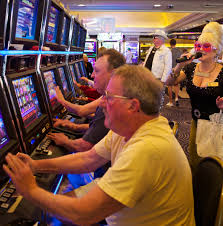Discover the psychology of bluffing in poker, why it works, and how players use it to gain an edge in online games and traditional casino tables.
Introduction
Poker has long been regarded as one of the most strategic and psychological table games in the world. Unlike many other casino experiences that rely heavily on chance, poker combines skill, strategy, and human psychology. One of the most fascinating elements of poker is the art of bluffing — convincing your opponents that your hand is stronger or weaker than it actually is.
Bluffing is not just a trick; it’s a well-thought-out psychological tactic that has helped players gain advantages in both traditional casinos and online games. To truly understand poker, one must understand bluffing: how it works, why it works, and when it is most effective.
In this Dis88 article, we’ll dive deep into the psychology of bluffing in poker table games, exploring its history, techniques, and its place in both live and online environments.
The Origins of Bluffing in Poker
Bluffing dates back to the early days of poker when the game was played in American saloons. With limited cards and a strong reliance on reading opponents, players realized that deception could be just as powerful as having a strong hand. Over time, bluffing became a core strategy, defining poker as much as betting or folding.
This psychological edge helped poker stand out among other casino online games, turning it into a battle of wits rather than pure luck. Today, bluffing is recognized as a skill that separates professional players from casual enthusiasts.
Why Bluffing Works in Poker
At its heart, bluffing works because of human psychology. People are naturally influenced by emotions, pressure, and uncertainty. In poker, players rarely know what cards their opponents hold, which creates a mental battleground.
Some key reasons bluffing is effective:
- Fear of Loss – Many players fold rather than risk losing more chips against a potential strong hand.
- Overconfidence – Skilled bluffers can exploit players who assume they can “read” every move.
- Risk vs. Reward – Bluffing creates pressure that forces opponents to weigh the potential consequences of their decisions.
- Information Gap – Since poker is incomplete information, players must rely on betting patterns, which can be manipulated through bluffing.
These factors make bluffing an art of exploiting uncertainty and emotional decision-making.
Types of Bluffs in Poker
Not all bluffs are the same. Over time, players have developed different bluffing strategies depending on the situation:
- Pure Bluff – Betting or raising with a completely weak hand, relying solely on convincing others to fold.
- Semi-Bluff – Bluffing with a hand that is currently weak but has the potential to improve (e.g., a flush draw).
- Continuation Bet Bluff – Betting after raising pre-flop, regardless of the flop, to maintain the image of strength.
- Stone-Cold Bluff – The riskiest type, where a player bets aggressively with no chance of improving their hand.
Understanding these bluffing styles is essential for mastering poker psychology.
The Role of Body Language and Tells
In live poker, bluffing often goes hand-in-hand with reading “tells.” These are small physical or behavioral signals that reveal the strength of a player’s hand. For example:
- Nervous movements like shaking hands may suggest a bluff.
- Overly steady breathing can be an attempt to mask excitement.
- Prolonged eye contact may signal weakness rather than strength.
Skilled players train themselves to spot these signs while also controlling their own behavior to remain unreadable.
In contrast, online games remove physical tells, forcing players to rely on betting patterns, timing, and digital behavior instead. This shift makes bluffing even more psychological in the online environment.
Bluffing in Online Poker Games
Without face-to-face interaction, bluffing in online poker relies on different cues. Here’s how bluffing adapts in online games:
- Bet Timing – Quick bets may indicate confidence or a desperate bluff.
- Bet Size – Large sudden bets can pressure opponents into folding.
- Consistency – Players who change their strategy suddenly may reveal bluffing attempts.
- History Tracking – Online platforms allow players to analyze patterns, making consistent bluffing risky.
Online bluffing requires a different skill set, where psychology is applied through digital behavior rather than physical presence.
Famous Bluffing Moments in Poker History
Bluffing has led to some of the most legendary moments in poker. Players like Chris Moneymaker, Daniel Negreanu, and Phil Ivey have made unforgettable plays by using deception to outsmart opponents.
For example, in the 2003 World Series of Poker, Chris Moneymaker famously bluffed his way to victory, inspiring millions to join online games and poker tournaments worldwide.
How to Master the Art of Bluffing
Bluffing is not about reckless risk-taking; it’s about calculated deception. Here are tips for improving bluffing skills:
- Know Your Opponents – Bluff more against cautious players and less against aggressive ones.
- Choose the Right Moment – Bluffing too often makes it predictable.
- Mix Your Strategy – Combine strong hands with bluffs to stay unpredictable.
- Maintain Composure – Whether live or online, never let emotions betray your intentions.
- Start Small – Use semi-bluffs to minimize risk while practicing.
The Psychology of Being Bluffed
While mastering bluffing is crucial, equally important is learning not to fall victim to it. Players must balance skepticism with rational decision-making. Calling too often makes one vulnerable to losing chips, while folding too often allows opponents to dominate.
This is where poker becomes a game of psychological warfare — reading others while remaining unreadable yourself.
Conclusion
Bluffing in poker is more than a tactic; it’s a psychological battle that defines the game itself. From old saloon tables to today’s online games, bluffing remains the most thrilling and strategic element of poker. It requires confidence, timing, and an understanding of human behavior, making it both an art and a science.
As poker continues to evolve, bluffing will always be at the heart of its excitement. Whether you’re a beginner learning the basics or a seasoned pro, mastering bluffing can take your poker experience to the next level.
So, if you’re passionate about strategy, psychology, and the thrill of competition, continue supporting the world of poker and every exciting league where the mind games never end.



